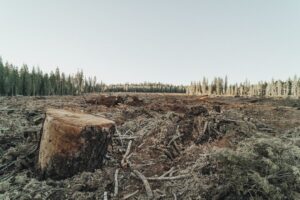
Driving By
“I’ve said it once, and I’ll say it again, we can’t eat money, or drink oil.”- Autumn Peltier
A recurring theme is happening in my life. It’s called deforestation, and you may have heard of it. If one drives through Rockland County, New York, today, you’ll find the amount of forest cover reduced over the last few decades.
As someone who grew up in the county, this reality seen in a satellite is different in that it’s felt. There was an inner horror from cutting down these ancient trees and seeing the bare clay exposed to the bright sunlight.
Through new experiences, I’ve awakened to a world where cutting trees is natural and good for forests. In the case of the “drive-by” case in Rockland County, there is no forest left, so it would only be seen as beneficial from an immediate zoning decision.

Context
Humans have lived on our planet for at least 200,000 years. To get a context for this period, Christ was born 2,000 years ago. So take 2,000 and multiply that by 100. And in that 200,000-year time period, humans have lived continuously on all continents except for Antarctica.

For the Lacandon Mayan People, life is returned to the system once a forest is cut down. The carbon from their “slash-and-burn” agriculture builds up and is stored in what is known as black soil.

Modern Humans
So, the forest in my neighborhood is now gone. Now what?
It’s my philosophy to teach kids to experience how remaining forests produce foods, fibers, etc. (just as the Lacandon Mayan forest does). After these kids become adults and realize that nature right outside their homes is where they go when they get sick, they’ll appreciate that forest, protect it, and share this knowledge with the next generation.

Learning from the Indigenous
We have to rethink how we plan cities and nature. For example, in New York City, you have exposure to a significant cultural life but need more connection to nature, fresh water, clean air, and local food. In the Adirondacks, you have the opposite. Why are these opposing forces so stark?
As someone who studies survival skills and the associated sciences, you quickly notice that the aforementioned Indigenous peoples have something that modern, industrialized peoples don’t. They seem to have merged culture and biodiversity into one, and I think there’s something there to look at.
Autumn is right. We cannot physically eat money or drink oil. But we can drink local spring water from a protected forest and enjoy your local orchard’s organically produced green apple. We must defend that spring, the green apple, the precious oil (hydrocarbons), and, of course, use that money to do good in this world for future generations.

Reforestation Learning:
Join us for our new 16-week semester ReWildingcourses and receive hands-on, in-person lessons. Learn about how to reforest, forage from the earth, and much, much more. Join us today!
Click To View All LMSR Courses
Follow LMSR here: https://lionmanrewilding.com/

